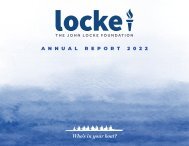Energy Crossroads: Exploring North Carolina’s Two Energy Futures
North Carolina’s Clean Energy Plan, a proposal put together by the Department of Environmental Quality at the behest of Governor Roy Cooper, calls for a 70-percent reduction of greenhouse gas emissions from electricity by 2030 and carbon neutrality by 2050. Duke Energy has submitted Integrated Resource Plans that include pathways to the Clean Energy Plan targets. Duke Energy’s Portfolio D most resembles the Clean Energy Plan, deploying wind, solar, and battery storage on an unprecedented scale. This report assesses North Carolina’s existing electricity portfolio, analyzes the changes proposed by Duke Energy’s Portfolio D, and compares that scenario to alternatives that utilize nuclear energy and natural gas to achieve emissions reduction rather than the Clean Energy Plan’s preferred wind, solar, and battery storage.
North Carolina’s Clean Energy Plan, a proposal put together by the Department of Environmental Quality at the behest of Governor Roy Cooper, calls for a 70-percent reduction of greenhouse gas emissions from electricity by 2030 and carbon neutrality by 2050. Duke Energy has submitted Integrated Resource Plans that include pathways to the Clean Energy Plan targets. Duke Energy’s Portfolio D most resembles the Clean Energy Plan, deploying wind, solar, and battery storage on an unprecedented scale.
This report assesses North Carolina’s existing electricity portfolio, analyzes the changes proposed by Duke Energy’s Portfolio D, and compares that scenario to alternatives that utilize nuclear energy and natural gas to achieve emissions reduction rather than the Clean Energy Plan’s preferred wind, solar, and battery storage.
You also want an ePaper? Increase the reach of your titles
YUMPU automatically turns print PDFs into web optimized ePapers that Google loves.
88 ENERGY CROSSROADS
capacity and for energy storage in the form of batteries. As noted in the
scenario analyses, this problem also necessitates extensive investment
in dispatchable backup sources that can generate in a pinch when wind
and solar fall off. The leading source for this type of generation is combustion-turbine
natural gas. Combustion-turbine gas has a quicker start
up time than combined-cycle, but runs less efficiently, emitting more,
and thus undermining the ostensible emissions savings of adding wind
and solar capacity.
Complicating matters further, the battery supply chain presents a host of
environmental and geopolitical risks in its own right. This section will give
attention to the concept of capacity factor, to levelized and imposed costs,
to environmental and geopolitical risk, and, most extensively, to land use.
As Duke Energy describes, pursuing an electricity scenario compatible
with Governor Cooper and DEQ’s Clean Energy Plan demands “extensive
additional analysis around the siting, permitting, interconnection,
system upgrades, supply chain and operational considerations of more
significant amounts of intermittent resources and much greater dependence
on energy storage on the system.”
Capacity Factor
Another way of describing wind and solar’s intermittency problems is
with the concept of capacity factor. In a handy guide to electricity lingo, 52
the U.S. Department of Energy describes the concept in this way:
“Capacity factors allow energy buffs to examine the reliability of various
power plants. It basically measures how often a plant is running at maximum
power. A plant with a capacity factor of 100% means it’s producing
power all of the time.”
When North Carolinians see the scale of wind and solar additions, it is
critical that they appreciate that capacity means something very different
for a source like nuclear than it does for wind and solar in terms of
actual power production.











